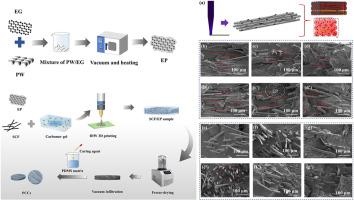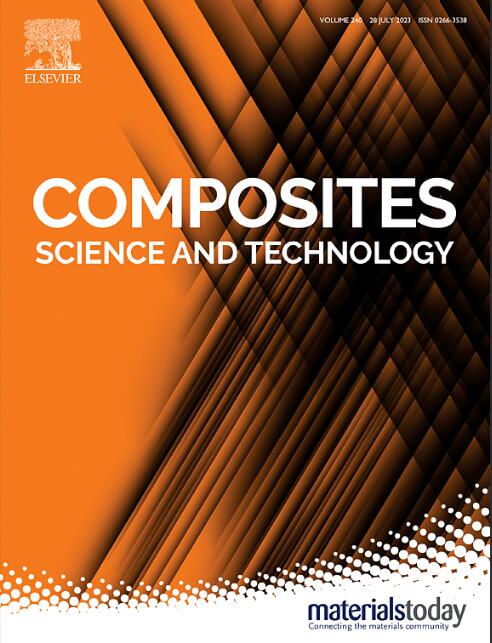3D printing, leakage-proof, and flexible phase change composites for thermal management application
IF 8.3
1区 材料科学
Q1 MATERIALS SCIENCE, COMPOSITES
引用次数: 0
Abstract
Phase change composites (PCCs) have attracted much attention in the fields of thermal management due to their high latent heat. However, their risk of leakage and poor shape designability greatly limit their industrial applications. Therefore, there is an urgent need to develop leakage-proof and customizable PCCs to meet the emerging requirements of thermal management applications. Some scholars have proposed the concept of preparing PCCs by 3D printing technology, aiming to meet customized thermal management requirements of various electronic devices. Nevertheless, the phase change material leaking of PCCs under high temperature is still a tough problem to solve. In this study, expanded graphite (EG) is used as the carrier for paraffin wax (PW), which names as EP can tightly enveloping PW in its porous structure. Then, an innovative carbomer gel ink is prepared for 3D printing using EP and short carbon fiber (SCF) as thermal conductive fillers. Freeze-drying and polydimethylsiloxane (PDMS) infiltrating procedures are furtherly performed to ensure the flexibility of final PCCs samples. A maximum thermal conductivity of 2.89 W/(m·K) is obtained when the content of SCF/EP filler is 10 wt%. Importantly, the flexible PCCs prepared through this method effectively prevent the PW leaking during thermal management applications, thereby avoiding the consequent safety risks and enhancing the lifespan of electronic devices. This work opens up a promising pathway for the rapid fabrication of leakage-proof, customizable and flexible PCCs.

用于热管理应用的三维打印、防漏和柔性相变复合材料
相变复合材料(PCC)因其高潜热而在热管理领域备受关注。然而,其泄漏风险和形状可设计性差极大地限制了其工业应用。因此,迫切需要开发防泄漏和可定制的 PCC,以满足热管理应用的新要求。一些学者提出了利用 3D 打印技术制备 PCC 的概念,旨在满足各种电子设备的定制化热管理要求。然而,PCC 在高温条件下的相变材料泄漏仍是一个亟待解决的难题。在这项研究中,膨胀石墨(EG)被用作石蜡(PW)的载体,EG的名称是EP,因为EP可以在其多孔结构中紧密包裹PW。然后,使用 EP 和短碳纤维(SCF)作为导热填料,制备了一种用于 3D 打印的创新卡波姆凝胶墨水。为了确保最终 PCCs 样品的柔韧性,还进一步进行了冷冻干燥和聚二甲基硅氧烷(PDMS)浸润程序。当 SCF/EP 填料的含量为 10 wt% 时,最大导热系数为 2.89 W/(m-K)。重要的是,通过这种方法制备的柔性 PCC 能有效防止 PW 在热管理应用中泄漏,从而避免了由此带来的安全风险,并延长了电子设备的使用寿命。这项工作为快速制备防漏、可定制和柔性 PCC 开辟了一条前景广阔的途径。
本文章由计算机程序翻译,如有差异,请以英文原文为准。
求助全文
约1分钟内获得全文
求助全文
来源期刊

Composites Science and Technology
工程技术-材料科学:复合
CiteScore
16.20
自引率
9.90%
发文量
611
审稿时长
33 days
期刊介绍:
Composites Science and Technology publishes refereed original articles on the fundamental and applied science of engineering composites. The focus of this journal is on polymeric matrix composites with reinforcements/fillers ranging from nano- to macro-scale. CSTE encourages manuscripts reporting unique, innovative contributions to the physics, chemistry, materials science and applied mechanics aspects of advanced composites.
Besides traditional fiber reinforced composites, novel composites with significant potential for engineering applications are encouraged.
 求助内容:
求助内容: 应助结果提醒方式:
应助结果提醒方式:


